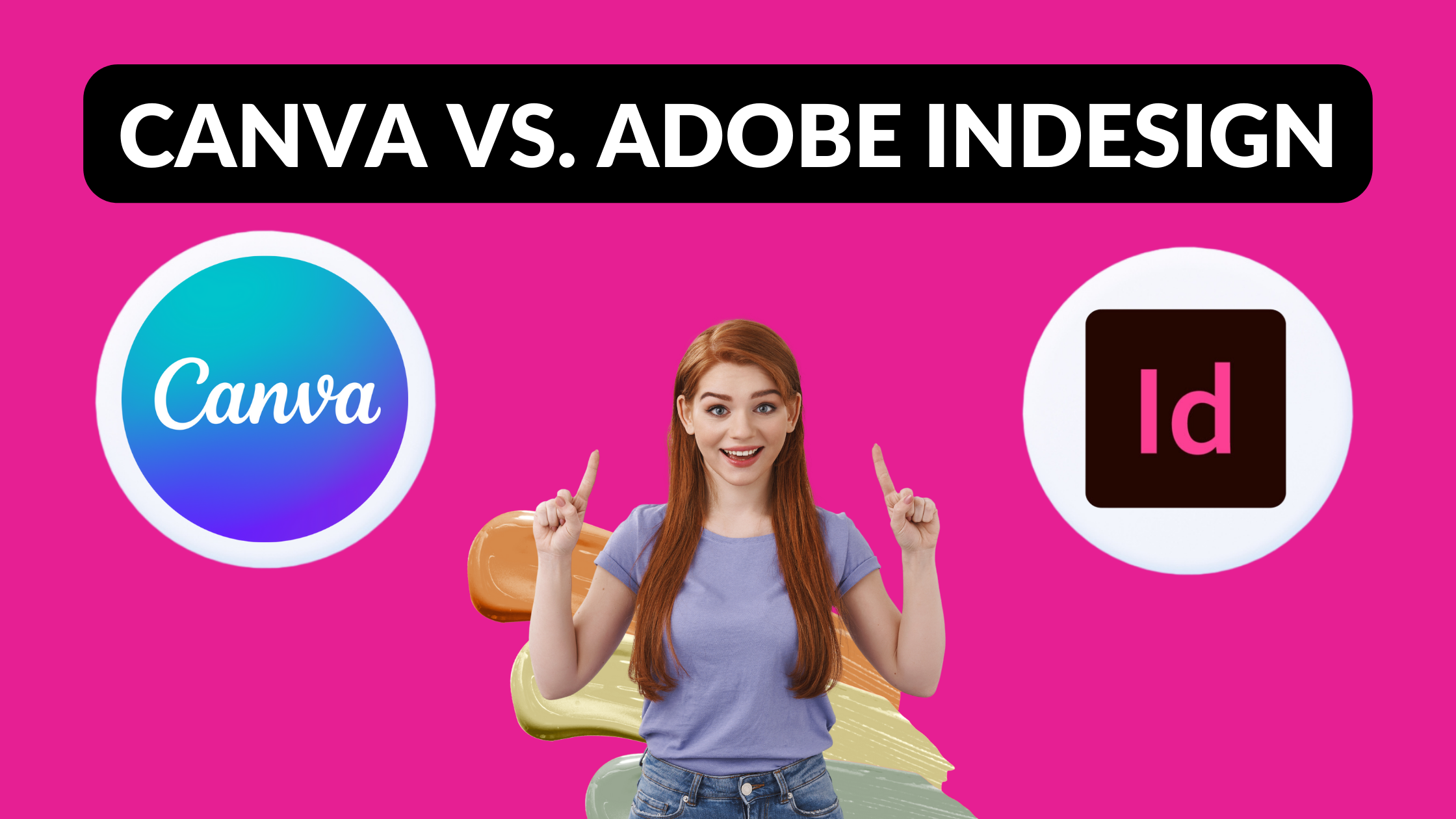If you’re pondering the choice between Canva and InDesign for your design projects, you may find yourself in a predicament. Canva’s intuitive interface and accessibility have garnered praise, especially for those new to design. However, before making a decision, consider the intricacies of design control and professional tools that InDesign offers. The debate over which platform reigns supreme is not just a matter of preference, but one of functionality and effectiveness in meeting your design aspirations. Explore the nuances of each platform to determine the ideal fit for your creative endeavors.
Pricing and Subscription Models
When considering the pricing and subscription models of Canva and Adobe InDesign, it is essential to evaluate the cost-effectiveness and features offered by each platform. Canva provides a freemium model with basic features for free, while Canva Pro costs $12.99/month annually or $16.99 monthly. In comparison, Adobe InDesign is part of Adobe Creative Cloud, costing $20.99/month for the Single App plan. Canva offers accessibility advantages through its affordability and user-friendly interface, catering to occasional graphic design needs. On the other hand, Adobe InDesign targets professional graphic designers and publishers with its advanced features and precise design control. Canva’s subscription benefits include priority support, custom font uploads, and a vast library of premium stock photos and videos. In contrast, Adobe InDesign’s Single App plan provides 100GB cloud storage and access to other Adobe applications like Photoshop and Illustrator. When making a choice between the two platforms, your decision may hinge upon your design requirements, budget constraints, and level of expertise in graphic design tools.
Design Flexibility and Customization
For those seeking intricate customization and extensive design control, Adobe InDesign stands out as a professional-level tool offering unparalleled flexibility and precision. When it comes to design versatility and creative freedom, InDesign excels in providing users with the tools needed to achieve their vision. Here are some key aspects to consider:
- Design Versatility: Adobe InDesign allows for intricate and highly customized designs, making it ideal for professional projects.
- Creative Freedom: With precise control over typography, layout elements, and styles, InDesign empowers users to explore their creativity.
- Design Control: Users have the ability to fine-tune every aspect of their design, ensuring a high level of control over the final product.
- Visual Aesthetics: The advanced typography features and layout tools in InDesign contribute to visually appealing and polished designs.
- Customization Options: From complex styles to detailed layout adjustments, InDesign offers a wide range of customization options for tailored design solutions.
Ease of Use and User Interface
Users navigating through Canva and Adobe InDesign will notice a distinct contrast in the ease of use and user interface between the two graphic design platforms. Canva, with its web-based approach, provides a user-friendly interface suited for beginners and non-designers. The drag-and-drop functionality, vast library of templates, graphics, and fonts, along with intuitive design tools, make it ideal for quick and easy design tasks in visual communication. On the other hand, Adobe InDesign, as professional design software, offers a high level of design control but comes with a steep learning curve. Its interface, although more complex, caters to the precision required for professional graphic design work. While Canva prioritizes simplicity and accessibility, InDesign focuses on providing advanced creative tools for users with design experience. When considering user experience, Canva excels in catering to a wider audience seeking quick design solutions, whereas Adobe InDesign is tailored for users demanding intricate customization and design flexibility in graphic design projects.
Collaboration and Sharing Features
Collaboration and sharing features in Canva and Adobe InDesign offer distinct advantages for different types of users and design projects.
- Real-time feedback: Canva allows for instant feedback and comments, promoting efficient communication among team members.
- Team collaboration: In Canva, multiple users can collaborate simultaneously on a design project, enhancing teamwork and productivity.
- Sharing permissions: Canva offers customizable sharing permissions to control who can view or edit designs, ensuring data security.
- Design critique: Canva enables users to provide detailed critiques and suggestions directly on the design, fostering constructive feedback loops.
- Collaboration tools: Canva provides various collaboration tools like live editing, version history, and design sharing, streamlining the collaborative design process.
These features make Canva a strong choice for teams looking to work together seamlessly on design projects, allowing for real-time interactions, secure sharing, and effective communication throughout the design process.
Workflow Integration and Efficiency
Efficient workflow integration is crucial for maximizing productivity and streamlining design processes in both Canva and Adobe InDesign. Canva shines in its simplicity and collaborative tools, while Adobe InDesign offers advanced features for professionals. Here is a comparison table highlighting the integration advantages, collaborative tools, and efficiency enhancements of both platforms:
| Canva | Adobe InDesign | |
|---|---|---|
| Integration Advantages | Streamlined workflow with web-based access | Seamless integration with Creative Cloud |
| Collaborative Tools | Real-time collaboration and feedback | Limited collaboration features |
| Efficiency Enhancements | User-friendly interface for quick designs | Precise typography control and layout flexibility |
Canva’s cross-platform compatibility and user-friendly interface make it ideal for beginners and quick design solutions. On the other hand, Adobe InDesign’s integration with the Creative Cloud suite enhances collaboration and provides robust tools for professional design projects. Select the platform that aligns with your design needs and level of expertise to optimize workflow efficiency.
Target Audience and User Skill Level
For those new to graphic design tools, understanding the target audience and required skill level can significantly impact your choice between Canva and Adobe InDesign. Canva caters to a broader range of users, including beginners and non-designers, with its beginner-friendly design and simplified interface. It focuses on providing quick design solutions through its user experience-focused approach.
- Canva targets non-designers and small businesses.
- Canva offers an intuitive interface for users without design expertise.
- Canva provides quick design solutions through its simplified interface.
- Canva is ideal for beginners seeking easy and efficient design tools.
- Canva prioritizes user experience with its focus on simplicity and quick design solutions.
Customer Support and Resources
With its emphasis on user satisfaction and accessibility, Canva’s customer support and resources play a vital role in providing assistance to users of all skill levels. Canva offers various support options, including a knowledge base, email support, and a responsive customer support team. These resources ensure that users can quickly find answers to their queries and receive timely assistance when needed. Additionally, Canva provides a wide range of design resources such as pre-designed templates, graphics, and fonts, enhancing the user experience and facilitating the design process. The learning materials offered by Canva further contribute to user skill development, making it easier for beginners to create professional-looking designs. The accessibility of these resources within the platform ensures that users can easily access the support options and design materials, ultimately empowering them to unleash their creativity and design skills effectively.




